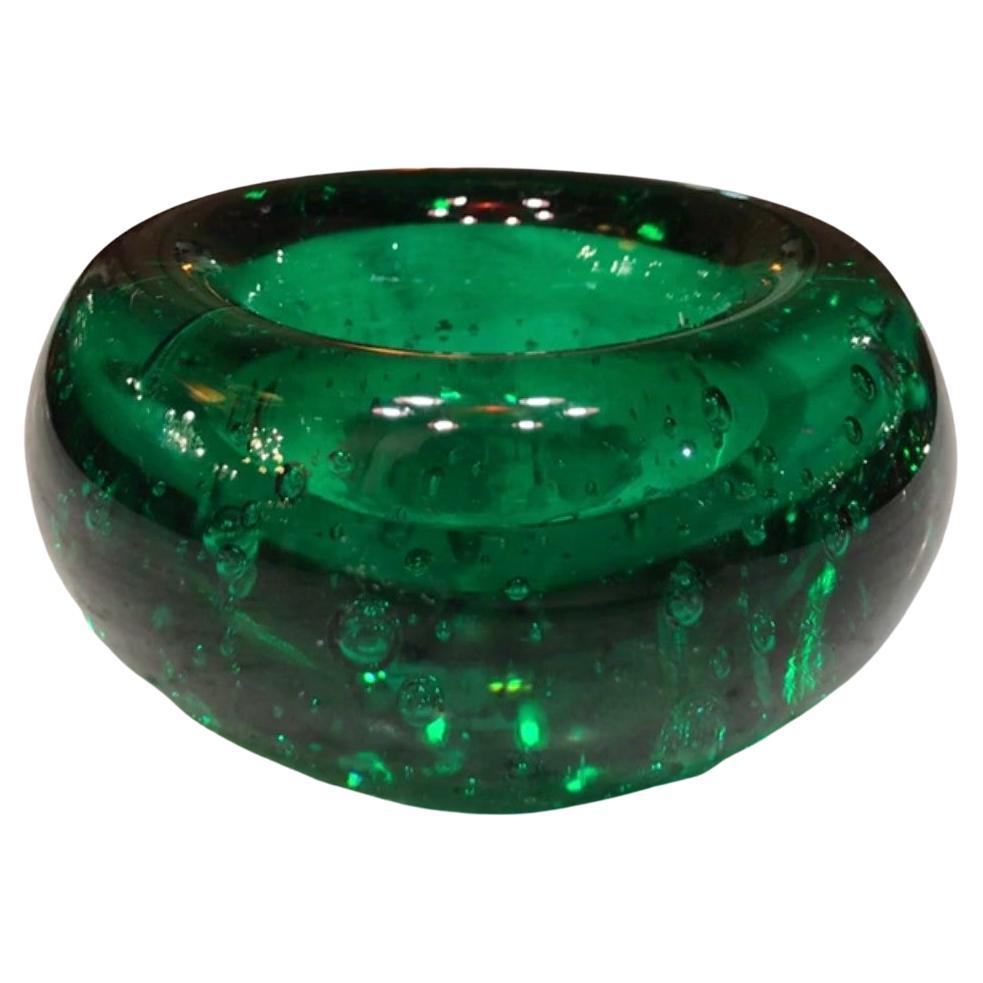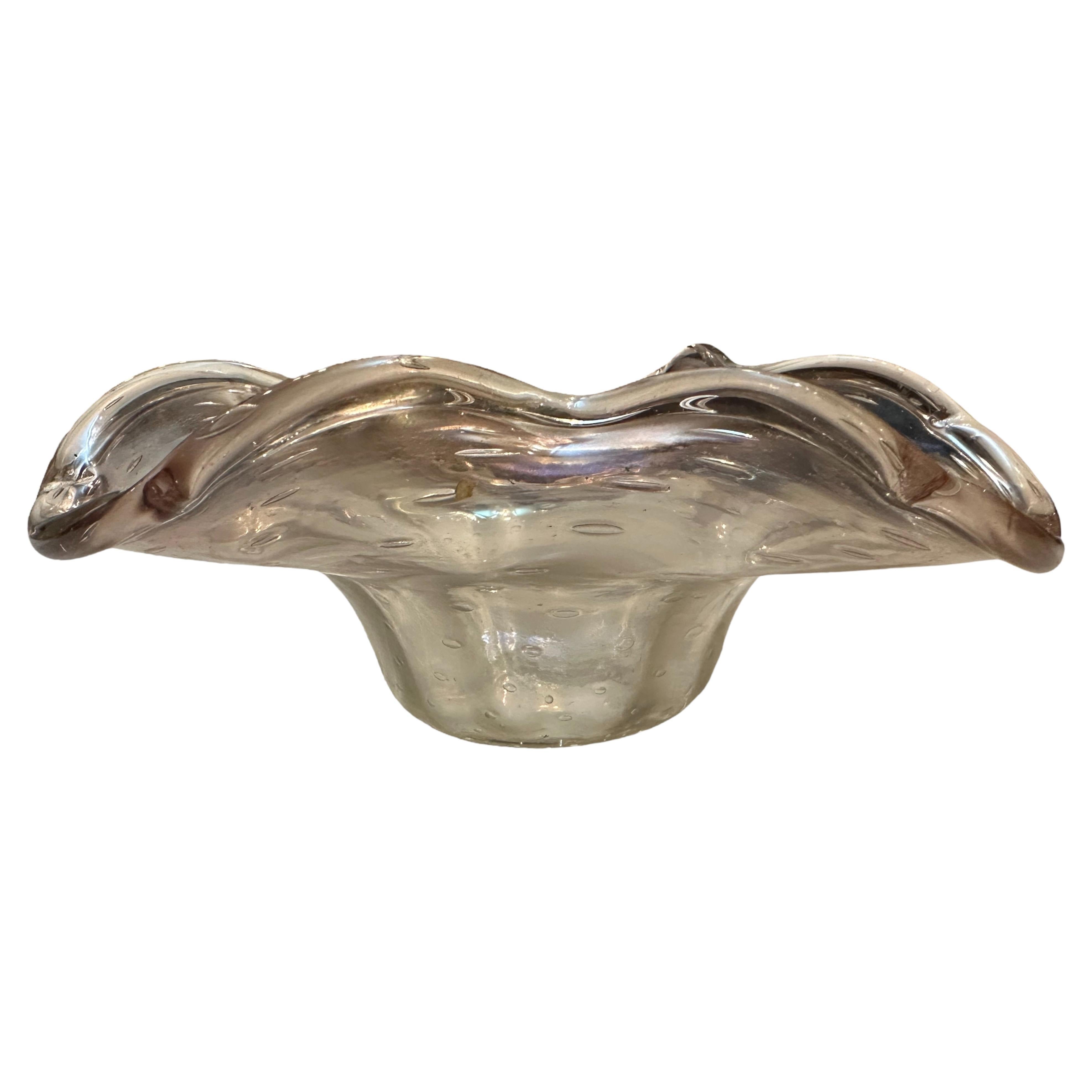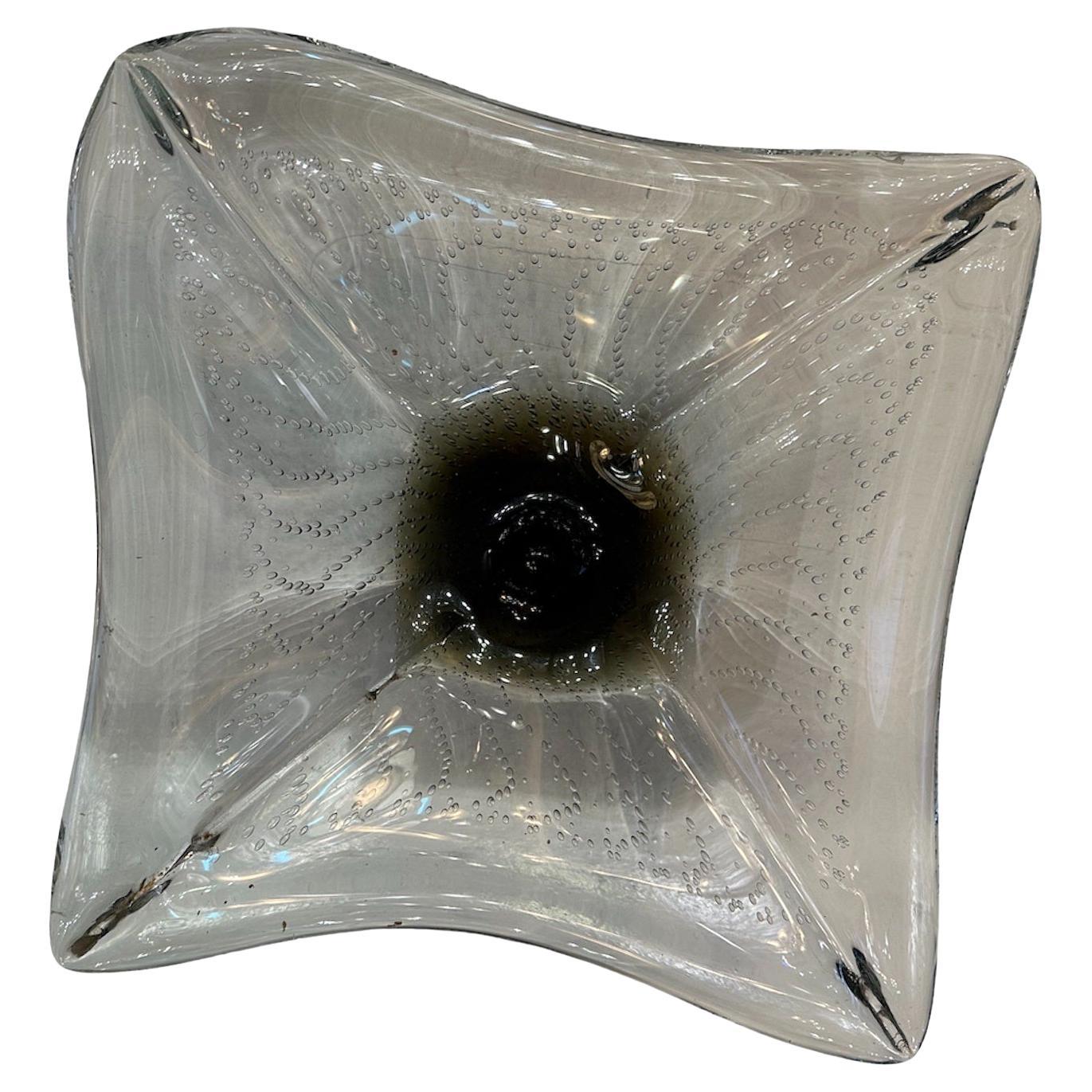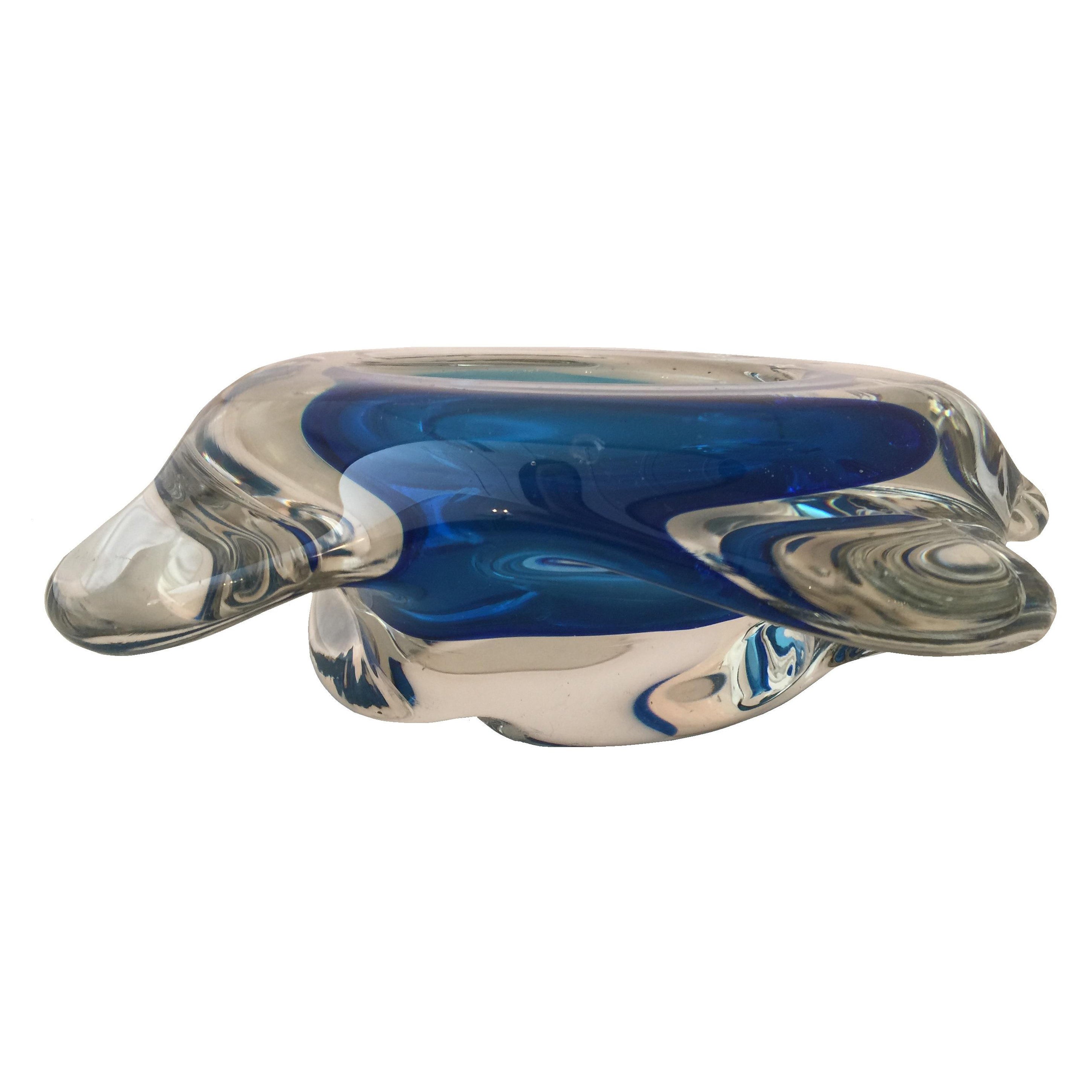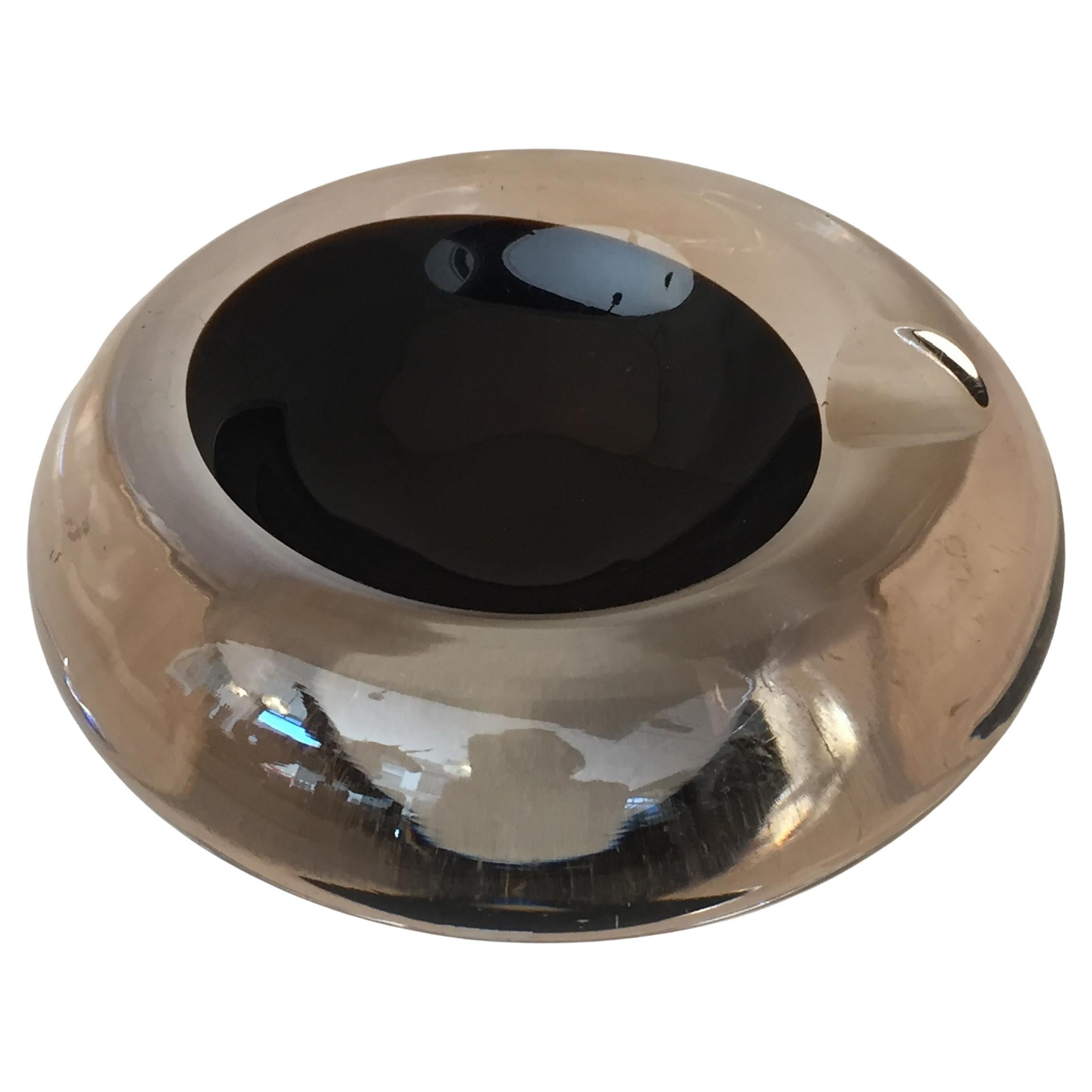Items Similar to Murano, 1930, Italian. Attributed to Carlo Scarpa
Video Loading
Want more images or videos?
Request additional images or videos from the seller
1 of 9
Murano, 1930, Italian. Attributed to Carlo Scarpa
About the Item
Murano
Attributed to Carlo Scarpa
We have specialized in the sale of Art Deco and Art Nouveau and Vintage styles since 1982. If you have any questions we are at your disposal.
Pushing the button that reads 'View All From Seller'. And you can see more objects to the style for sale.
Carlo Scarpa (2 June 1906 – 28 November 1978) was an Italian architect, influenced by the materials, landscape and the history of Venetian culture, and by Japan. Scarpa translated his interests in history, regionalism, invention, and the techniques of the artist and craftsman into ingenious glass and furniture design.
Why are there so many antiques in Argentina?
In the 1880 – 1940 there was a grate wave of immigration encouraged by the periods of war that were taking place.
1st World War took place between 1914 and 1918
2nd World War took place between 1939 and 1945
The immigrants options were New York or Buenos Aires. Tickets were cheap and in Buenos Aires they were welcomed with open arms, as it was a country where everything was still to be done.
Argentina was the country of new opportunities, labour was needed and religious freedom was assured, in many cases the of the family travel first until they were settled and then the rest of the family members join them.
In the immigrant museum “Ellis Island Immigrant Building” in New York you can se the promotional posters of the boats that would take them to a new life.
Between the years 1895 and 1896, Argentina had the highest DGP (gross domestic product) per capita in the world according to the Maddison Historical Statistics index, this situation arose due to the large amount of food being exported to European countries, which were at war.
The Argentinean ships left the port of Buenos Aires with food, but they returned with furniture, clothes and construction elements, (it´s common to see this the old buildings of the historic neighbourhood of San Telmo, the beams with the inscription “Made in England)”, as well as many markets that were built in Buenos Aires, such us the San Telmo Market, whose structure was brought by ship and afterwards assembled in 900 Defensa Street.
With the great influence of European immigrants living in the country, the children of the upper classes travelled to study in France, resulting in the inauguration of “La Maison Argentinienne”, on 27th of June 1928, in the international city of Paris, which hosted many Argentinians that were studying in Frace.
It´s the fourth house to be built after France, Canada and Belgium, being the first Spanish-speaking one. Still in place today (17 Bd Jourdan, 75014, Paris, France). Many of the children of these wealthy families who attended international art exhibitions, museums and art courses abroad, took a keen interest in the European style. This is why Buenos Aires was at the time referred as “The Paris of South America”.
Between the years 1890 and 1920 more than a hundred Palaces were built on Alvear Avenue the most exclusive avenue in Buenos Aires. Today some of these palaces have been transformed into museums, hotels and embassies.
In the year 1936, the Kavanagh building was inaugurated, it was the tallest reinforced concrete building in South America.
During 1994 the American Society of Civil Engineers distinguished it as an “international engineering milestone”, and it´s now considered a World Heritage of Modern Architecture.
At the time was common to hire foreign architects such as Le Corbusier, who visited Buenos Aires/Argentina in 1929 and in 1948 he drew up the blueprints for a house built in La Plata City (which was declared a World Heritage Site).
In 1947, the Hungarian architect Marcelo Breuer designed “Parador Ariston” in the seaside city of Mar del Plata. After an Argentinean student at Harvard University convinced him to come to Argentina. He worked on an urban development project in the Casa Amarilla, area of La Boca.
The Ukrainian architect, Vladimiro Acosta, arrives in Argentina in 1928 and worked as an architect until que moved to Brazil.
Antonio Bonet, a Spanish architect who worked with Le Corbusier in Paris, arrives in Argentina in 1937, where he carried out several architectural works and in 1938 designs the well-known BFK chair.
Andres Kálnay, of Hungarian origin, made around 120 architectural masterpieces, among which the former Munich brewery stands out, he even made the furniture’s design.
The German architect, Walter Gropius, director of the Bauhaus, lived in Argentina, where he wrote articles for “Sur” magazine and founded in Buenos Aires, an architectural firm with Franz Möller, who was also an architect, where he built two houses.
At the same time several famous designers decided to immigrate to Argentina, among them we can find the well-known French designer, Jean-Michel Frank, who arrived in the country in 1940 and also worked for the Rockefeller family.
Special pieces were made, which were sold exclusively in the country, such as the well-known German company “WMF”, who sold their products by catalogue, which were chosen by the ladies of high society in the list of wedding gifts, as well as the pieces designed by Christofle.
The Swiss sculptor Alberto Giacometti, made special pieces for Argentinean mansions.
In 1904 the first Jansen branch outside Paris was established in Buenos Aires, as the Argentinean clientele demanded a large amount of furniture, from the end of the 19th century to the mid-20th century.
In 1970, the brand Rigolleau Argentina made pieces authorised by Lalique.
The brands Maple and Thompson also set up shop in the country.
The French plastic artist, Marcel Duchamp moved to Argentina in 1918-1919.
Glass signed Gallé, Charder, Leverre, Schneider, Muller and other French firms. They were bought in flower shops and were given to ladies with beautiful floral arrangements.
Some furniture manufacturers travelled to international fairs and bough the patterns to produce the furniture in Argentina, such as the furniture firm Englander and Bonta, who bought the patterns ins Italy.
It is worth mentioning that in Argentina we have the largest community of Italians outside of Italy, as it is estimated that 70 percent of the inhabitants have at least one Italian descendant, followed by Spanish immigrants.
The most Important furniture stores in Argentina:
Comte is founded in 1934 (under the direct management of Jean Michel Frank in 1940).
Nordiska (Swedish company established in 1934).
Churba in 1960, a company that brought foreign designers to present their furniture in the country:
Denmark: (Arne Jacobsen, Finn Juhl, Bender Madsen, Ejner Larsen, Poul Kjaerholm, Hans Wegner)
Sweden: (Hans Agne Jakobsson, Gustavsberg)
United States: (Herman Miller)
Finland: (Lisa Johansson, Folke Arstrom, Tapio Wirkkala, Alvar Aalto, Timo Sarpaneva)
Swedish Factory: (Orrefors)
Italy: (Littala, Vico Magistretti, Emma Gismondi, Gae Aulenti, Angelo Mangiarotti, Elio Martinelli, Gianna Celada, Angelo Mangiarotti, Mario Bellini, Carlo Scarpa)
Finland: (Olivia Toikka)
Plata Lappas (Lappas Silver): a goldsmith shop founded in 1887 in Argentina by Alcibiades Lappas of Greek origin.
In 2019, in Argentina took place “the Art Deco world congress”, in which we participated as hosts invited by Geo Darder, founder of the Copperbridge – Foundation, in which prominent people from all over the world attended to learn about Art Deco in Argentina.
Argentina currently has more than 100 Art Deco buildings and another 90 Art Nouveau buildings throughout the city of Buenos Aires.
Argentina is a country that has not been involved in many wars, which is why it has been a refuge for works of art and antiques from different periods of time, unlike European countries. That is way many collectors, museums and antique dealers from all over the world visit it, you should not miss the opportunity to visit this great country.
Laura Guevara Kjuder, architect.
- Attributed to:Carlo Scarpa (Designer)
- Dimensions:Height: 1.97 in (5 cm)Width: 4.34 in (11 cm)Depth: 3.15 in (8 cm)
- Style:Art Deco (Of the Period)
- Materials and Techniques:
- Place of Origin:
- Period:
- Date of Manufacture:1930
- Condition:Wear consistent with age and use.
- Seller Location:Ciudad Autónoma Buenos Aires, AR
- Reference Number:
About the Seller
5.0
Vetted Seller
These experienced sellers undergo a comprehensive evaluation by our team of in-house experts.
Established in 1982
1stDibs seller since 2022
21 sales on 1stDibs
Typical response time: <1 hour
- ShippingRetrieving quote...Ships From: Ciudad Autónoma Buenos Aires, Argentina
- Return PolicyThis item cannot be returned.
More From This SellerView All
- Murano, 1930, Italian. , Technique: Bullicante Attributed to Carlo ScarpaBy Carlo ScarpaLocated in Ciudad Autónoma Buenos Aires, CMurano Technical Bullicante Attributed to Carlo Scarpa We have specialized in the sale of Art Deco and Art Nouveau and Vintage styles since 1982. If you have any questions we are at...Category
Vintage 1930s Italian Art Deco Centerpieces
MaterialsMurano Glass
- Murano, 1930, Italian, Attributed to Carlo Scarpa, Technique: BullicanteBy Carlo ScarpaLocated in Ciudad Autónoma Buenos Aires, CMurano Technical Bullicante Attributed to Carlo Scarpa We have specialized in the sale of Art Deco and Art Nouveau and Vintage styles since 1982. If you have any questions we are at...Category
Vintage 1930s Italian Art Deco Centerpieces
MaterialsMurano Glass
- Murano, 1940, Italian, Attributed to Carlo Scarpa, Technique: BullicanteBy Carlo ScarpaLocated in Ciudad Autónoma Buenos Aires, CMurano Technical Bullicante Attributed to Carlo Scarpa We have specialized in the sale of Art Deco and Art Nouveau and Vintage styles since 1982. If you have any questions we are at...Category
Vintage 1940s Italian Art Deco Centerpieces
MaterialsMurano Glass
- Murano, 1940, Italian, Attributed to Carlo Scarpa, Technique: BullicanteBy Carlo ScarpaLocated in Ciudad Autónoma Buenos Aires, CMurano Technical Bullicante Attributed to Carlo Scarpa We have specialized in the sale of Art Deco and Art Nouveau and Vintage styles since 1982. If you have any questions we are at...Category
Vintage 1940s Italian Art Deco Centerpieces
MaterialsMurano Glass
- Murano, Italian, Attributed to, Seguso, 1930By Barovier Seguso & FerroLocated in Ciudad Autónoma Buenos Aires, CMurano We have specialized in the sale of Art Deco and Art Nouveau and Vintage styles since 1982. If you have any questions we are at your disposal. Pushing the button that reads 'View All From Seller'. And you can see more objects to the style for sale. The history of "Seguso Vetri D' Arte" is directly linked to the "Vetreria Artistica Barovier" company. When the Barovier workshop was forced to reduce production in 1929, due to a financial crisis in America, the original group of ten partners had to separate and Antonio Seguso in 1931, assisted by his sons Ernesto and Archimede opened a small workshop of his own. They were joined by Luigi Olimpio Ferro and Napoleone Barovier the following year. Together the craftsmen establish the "Artistica Soffieria e Vetreria Barovier Seguso & Ferro" company as equal partners. In 1934 Flavio Poli joins the firm as artistic director and within only a brief period of time a distinct style of designs emerged. The close collaboration between Flavio Poli, Archimede Seguso and Alfredo Barbini played an important part in the success of the company. New glass techniques are developed which include never before seen color applications. The companies innovative designs constantly received awards and during the 1935 World Fair in Brussels and the 1936 Milan Triennale they did attract the interest of a new group of clientele. One of them is the French wholesale company "Veronese" from Paris which would play a defining role in the history of the company. The demand for an increase in production requires additional investments and the partners felt that there is a need to multiply their investment tenfold. Luigi Olimpio Ferro subsequently decided to withdraw from the company and his shares are acquired by Flavio Poli, which makes him a full partner. As a result, the company name is changed to Seguso Vetri D’ Arte and it is officially recognized in 1937. A period of great success and prosperity ensues, lasting until the outbreak of World War II. The post war period is a time of great change in Europe and the rebuilding of the economical structure in Italy requires major investments which result in the introduction of new import duties and taxes. To safeguard the copyright of the Seguso Vetri D'Arte designs an application for a second entry into the commercial registers of Venice is made by the partners in 1945. Strict export regulations curb international business relations for many years after the war and the company decides to focus on the domestic market instead. In 1946 a large retail location is opened at the Piazza Diaz in Milan where in addition to the art glass, German porcelain and Italian pottery is offered. In 1950 Flavio Poli develops a new sommerso glass technique, which consists of an overlaying of transparent layers of glass. The overlapping creates new shades of color which prior to the introduction of this technique had not been seen. Flavio Poli's most iconic design is the "Valve", which resembles an upright, slightly opened clam shell. The design was introduced in 1951. Mario Pinzoni joins the company in 1953 as a personal assistant to Flavio Poli and his responsibilities as a draftsman included the compilation of archival and the existing production drawing s...Category
Vintage 1930s Italian Art Deco Ashtrays
MaterialsMurano Glass
- Murano, 1930, Italian, Attributed to Paolo VeniniBy Paolo VeniniLocated in Ciudad Autónoma Buenos Aires, CMurano We have specialized in the sale of Art Deco and Art Nouveau and Vintage styles since 1982. If you have any questions we are at your disposal. Pushing the button that reads 'View All From Seller'. And you can see more objects to the style for sale. Attributed to Venini Early life and education Venini was born in the town of Cusano near Milan, Italy. After serving in the Royal Italian Army in World War I, he trained as a lawyer[2] and began his practice in Milan. He soon developed an acquaintance with Giacomo Cappellin, a native of Venice who owned a Milan antiques...Category
Vintage 1930s Italian Art Deco Ashtrays
MaterialsMurano Glass
You May Also Like
- Murano Glass Ashtray and Pestle attributed to Carlo Scarpa for Venini 1950sBy Carlo ScarpaLocated in Palermo, ITMurano glass ashtray and pestle, attributed to Carlo Scarpa for Venini, 1950s Intact, with small signs of aging, it was purchased in Venice by my great-grandfather and was part of hi...Category
Vintage 1950s Italian Ashtrays
MaterialsGlass
- Carlo Scarpa Venini Murano Signed 1930s Corroso Surface Italian Art Glass BowlBy Carlo Scarpa, VeniniLocated in Kissimmee, FLBeautiful large Murano hand blown green with acid etched surface Italian art glass decorative bowl. Documented to designer and architect Carlo Scarpa for Venini, circa 1934-1936. Cre...Category
Mid-20th Century Italian Mid-Century Modern Decorative Bowls
MaterialsGlass, Art Glass, Blown Glass, Murano Glass, Sommerso
- Carlo Scarpa Gold Flecks Murano Art Glass Bowl, Italy, 1950sBy Carlo ScarpaLocated in Barcelona, ESMid Century Modern Green Blue Gold Swirl Murano Art Glass Bullicante Pulled Sommerso Bowl Eye-catching Cordonato D'Oro Bullicante green blue Murano glass...Category
20th Century Italian Mid-Century Modern Decorative Bowls
MaterialsGold Leaf
- Carlo Scarpa Venini Murano Signed Bollicine Gold Leaf Italian Art Glass AshtrayBy Venini, Carlo ScarpaLocated in Kissimmee, FLBeautiful antique Murano hand blown Sommerso clear bubbles in champagne or caramel color with gold flecks Italian art glass ashtray. Documented to Venini company, and created by mast...Category
Mid-20th Century Italian Art Deco Decorative Bowls
MaterialsGold Leaf
- Italian Murano Art Glass AshtrayLocated in Byron Bay, NSWItalian Pink Murano Art glass ashtray 1960s. Rose flower shaped Murano ashtray in bright pink.Category
Vintage 1960s Italian Mid-Century Modern Ashtrays
MaterialsMurano Glass
- Italian Smoked Murano Glass AshtrayLocated in Byron Bay, NSWMid-Century Modern ashtray in Murano glass 1960s. Smoked glass ashtray very modern design and stylish look.Category
Vintage 1960s Italian Mid-Century Modern Ashtrays
MaterialsMurano Glass
Recently Viewed
View AllMore Ways To Browse
World Fair Glasses
Worlds Fair Glass
Swedish Glass All
Brands Of Vintage Glass
Old American Glass
Wedding Glasses
International Silver Deco
Hungary 1930
American Glass Artists Living
Museum Glass Case
International Silver 1939
Vintage Ladies Glasses
Ladies Vintage Glasses
Antique Silver Wedding
Antique Travel Glasses
Herman Miller Glass
Vintage Italian Clothes
70s Style Glass
